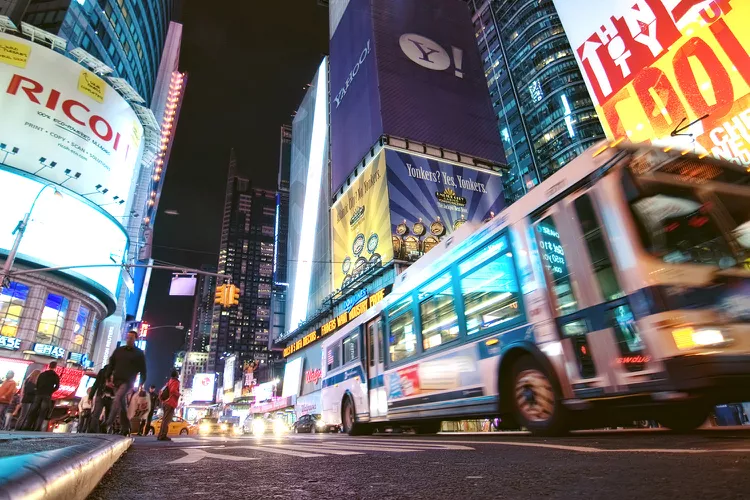1. Easy Access to All of Manhattan
While buses tend to be slower than subways for traveling around New York City, there are numerous advantages to using the bus while visiting New York City:
- They tend to service areas of Manhattan that are not located close to subway lines, especially in the far East and West areas of Manhattan.
- They provide a convenient option for Crosstown travel (between Manhattan’s East and West Sides).
- Buses offer the added benefit of allowing you to see various neighborhoods in Manhattan while you ride.
- If you’re traveling with small children, buses may be a better choice as they require fewer steps and less walking compared to the subways. Moreover, buses tend to be cleaner than the subway.
MetroCard or Cash?
- Fare can be paid with a MetroCard or coins (no dollar bills, no pennies allowed).
- If you pay with a MetroCard, you can receive a free transfer to another bus or the subway within 2 hours.
- Cash payments allow for a transfer, but it is only valid for transferring to another bus (not to the subway) within 2 hours.
Getting On and Off the Bus
- Wait for buses at designated bus stops.
- When the bus approaches your stop, raise your arm to indicate that you wish to board.
- Enter the bus through the front doors and pay your fare.
- Find a seat or move toward the back of the bus to accommodate other passengers boarding the bus.
- To request a stop: pull the cord or press the black band near the windows. A “Stop Requested” light will illuminate at the front of the bus.
- Exit through the doors at the rear of the bus.
Where Do the Buses Run?
The majority of buses in Manhattan operate in either an Uptown/Downtown or Crosstown direction.
Crosstown Buses
- Crosstown buses travel East and West along major streets (such as 42nd, 34th, 14th, etc.) and stop at nearly all Avenues.
- Taking a crosstown bus can be an excellent choice for those needing to traverse east/west in Manhattan, especially since subways only run crosstown along 14th Street and 42nd Street.
Uptown/Downtown Buses
- Uptown and Downtown buses run north or south along most Avenues (1st, 2nd, 3rd, Lexington, etc.) following the flow of traffic on that street.
- Uptown/Downtown buses include both local and express routes.
- A sign in the front window of the bus usually indicates if it is an express bus – ask the driver if you are uncertain.
- If you are waiting at a bus stop and want to be picked up, make sure to wave to the bus driver if they approach without slowing down. They typically stop for someone waiting at the bus stop, but it’s not always clear who intends to board.
- Local buses will stop every 2-3 blocks upon request. If you want the bus to stop, you need to push the black strip to request a stop. Otherwise, the driver will only stop if there is someone waiting at the bus stop.
- Buses running express will only stop at designated cross streets.




